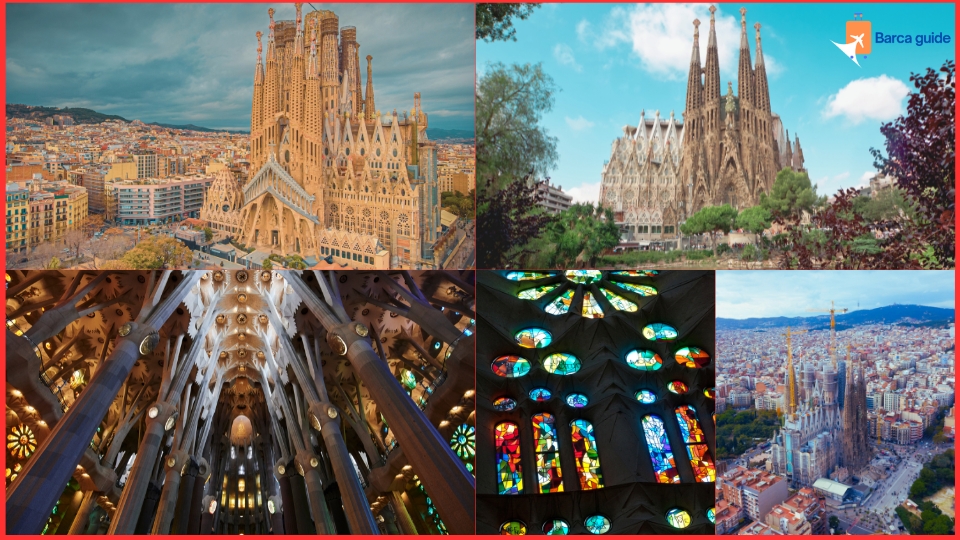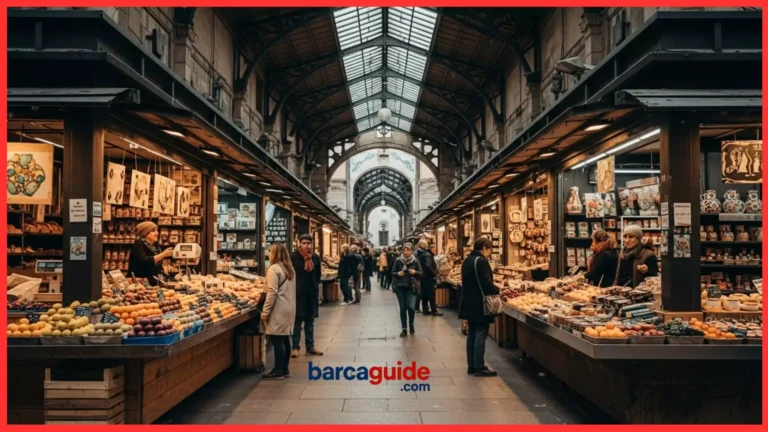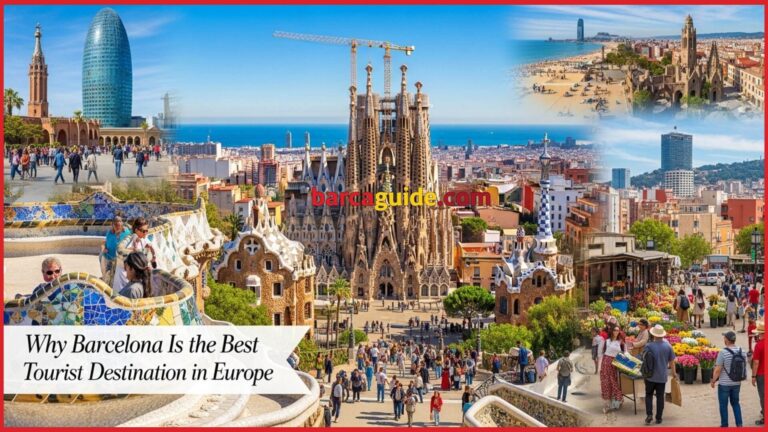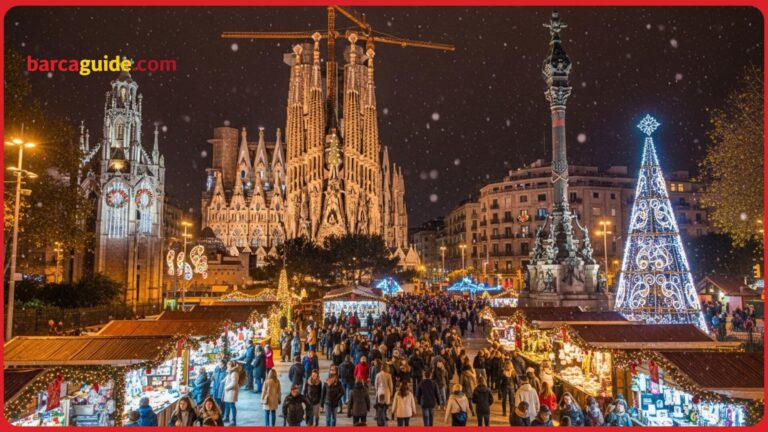How to Visit the Sagrada Familia in Barcelona: A Complete Guide
If you’re heading to Barcelona, the Sagrada Familia isn’t just another church on your list—it’s the reason many people visit Spain in the first place. This jaw-dropping basilica is Antoni Gaudí’s unfinished masterpiece, a UNESCO World Heritage site, and honestly, one of the most mind-blowing buildings you’ll ever see. Whether you’re into architecture or just love a good Instagram moment, this place delivers. Here’s everything you need to know to make your visit smooth, memorable, and worth every euro.
What Is the Sagrada Familia?
The Sagrada Familia is basically Gaudí’s love letter to Barcelona—and he spent 43 years writing it. Construction started way back in 1882, and here’s the wild part: it’s still not finished. Yep, over 140 years later, they’re still working on it. The current completion date? Somewhere around 2026, though honestly, who’s counting at this point?
Gaudí knew he wouldn’t live to see it done, saying, “My client is not in a hurry”—referring to God. The entire basilica is packed with religious symbolism, from the three façades representing Jesus’s birth, death, and glory, to the 18 towers symbolizing the apostles, evangelists, Mary, and Jesus himself. It’s not just a building—it’s a spiritual experience shaped in stone and stained glass.
Fun fact: when it’s finally done, it’ll be the tallest church in the world. Gaudí designed it to be one meter shorter than Montjuïc hill because he believed human creations shouldn’t surpass God’s work. Pretty humble for someone creating architectural genius.
Where Is the Sagrada Familia Located?
You’ll find this beauty in Barcelona’s Eixample district at Carrer de Mallorca, 401. The neighborhood is super walkable, with wide avenues and that classic grid layout that makes getting around pretty easy. It’s right in the heart of the city, so you’re never far from great cafés, shops, or other Gaudí masterpieces.
How to Get to the Sagrada Familia
By Metro
This is your best bet. Take either Line 2 (purple) or Line 5 (blue) and get off at Sagrada Familia station. You literally pop out right in front of it—can’t miss those towers. The metro runs frequently and costs around €2.40 for a single ticket.
By Bus
Lines 19, 33, 34, 43, 44, 50, and 51 all stop near the basilica. If you’re using a T-Casual card (10-trip ticket), buses and metro use the same fare system, so it’s super convenient.
By Taxi or Uber
From La Rambla, expect about €8-12 and a 10-minute ride. From the airport, you’re looking at €30-35 and around 25-30 minutes, depending on traffic. Honestly though, the metro from the airport is way cheaper if you’re not in a rush.
By Foot or Bike
If you’re staying in Eixample or Gràcia, it’s totally walkable. Barcelona also has Bicing (bike-share) stations everywhere, and the ride from central Barcelona takes 15-20 minutes through some gorgeous streets.
Best Time to Visit
Spring (April-May) and fall (September-October) are your sweet spots—pleasant weather and slightly fewer crowds. Summer’s packed with tourists, and winter can be rainy, though you’ll have more breathing room inside.
Time-wise, go early morning (9 AM opening) or late afternoon if you can. Here’s a pro tip: the stained glass windows are at their most magical in the late afternoon when the sun hits just right, turning the whole interior into a kaleidoscope of colors. Morning light through the Nativity Façade is stunning too, so really, you can’t go wrong.
Weekdays beat weekends every time. Sundays draw church-goers for mass, plus regular tourists, so it gets extra crowded.
Tickets and Entrance Information
Ticket Types
Basic Entry (around €26): Gets you inside to see the basilica and museum. Honestly, this is enough for most people.
Entry with Audio Guide (around €32): Adds context to what you’re seeing—worth it if you want the full story.
Entry + Tower Access (around €36): You get to climb either the Nativity or Passion tower for incredible city views. The Nativity Façade tower is more ornate, while the Passion tower offers better views. Both have elevators up but stairs down, and they’re not for anyone scared of heights.
Guided Tours (around €29-50): Live guides in multiple languages who really bring Gaudí’s vision to life.
How to Buy
Book online through the official Sagrada Familia website—seriously, don’t skip this. Same-day tickets at the entrance are rare, especially in high season. You might show up and find nothing available for days. Online booking also lets you pick your exact time slot.
Discounts
Students, seniors (65+), and kids under 11 get reduced rates. Under 11s are free but still need a ticket. Bring ID to prove eligibility.
Skip-the-Line Reality
All tickets are timed entry, so technically everyone “skips the line” if you book ahead. Just show up 15 minutes before your slot, and you’re golden.
What to See Inside the Sagrada Familia
Nativity Façade
This is the only façade completed during Gaudí’s lifetime, and it shows—every detail is obsessively crafted. It depicts Jesus’s birth and early life, with insane sculptural details. Look for the turtle and tortoise at the base (representing land and sea), and don’t miss the Tree of Life at the top.
Passion Façade
On the opposite side, this one’s stark and angular, representing Jesus’s suffering and death. Sculptor Josep Subirachs designed these modern, controversial figures that look totally different from Gaudí’s naturalistic style. Some people love it, some hate it—make up your own mind.
Interior
This is where jaws literally drop. The columns branch out like trees creating a stone forest, and the stained glass floods everything in blue, green, red, and orange light. Gaudí wanted visitors to feel like they were in a sacred grove, and honestly, he nailed it. The ceiling geometry is hypnotic—bring your neck pillow.
Museum and Crypt
Downstairs you’ll find Gaudí’s workshop models, drawings, and the crypt where he’s buried. It’s a fascinating look at his creative process and the construction techniques that made this possible.
Towers
If you booked tower access, prepare for narrow spiral staircases and incredible views over Barcelona. You can see Montjuïc, the Mediterranean, and the whole city grid from up there. The elevator takes you up, but it’s stairs all the way down—about 300+ steps.
Visitor Tips and Etiquette
Remember, this is a working basilica, not just a tourist attraction. Dress respectfully—no bare shoulders, super short shorts, or see-through clothing. You might get turned away.
Photography is allowed (no flash) but keep it respectful. Don’t be that person blocking traffic for the perfect selfie. Audio is allowed too, but keep your voice down.
The basilica is wheelchair accessible with elevators to most areas (though not the towers). There are lockers for big bags, restrooms, and a gift shop if you want a memento. No food or drinks inside.
Nearby Attractions
Gaudí Avenue
The street leading from the basilica toward Hospital de Sant Pau is lined with cafés perfect for post-visit processing. Grab a coffee and just… sit with what you saw.
More Gaudí
Casa Batlló and Casa Milà (La Pedrera) are both walkable in the Eixample district. Park Güell is a bit farther but totally worth combining with your Sagrada visit.
Food Nearby
Cervecería Catalana (Carrer de Mallorca, 236): Amazing tapas, always packed for good reason.
La Paradeta Sagrada Familia: Fresh seafood where you pick what you want and they cook it—super casual and delicious.
Federal Café: Great for brunch or a lighter meal with good coffee.
FAQs
How long should you spend here?
Plan for 1.5-2 hours minimum. If you’re doing towers or a guided tour, add another hour.
Is tower access worth it?
If you’re comfortable with heights and stairs, absolutely. The views are spectacular and you get closer looks at the architectural details.
Can you buy tickets the same day?
Technically yes, but realistically no—especially May through September. Weekday mornings in winter might work, but why risk it?
Is it open on Sundays and holidays?
Yes, but mass is held at 9 AM on Sundays. The basilica opens to tourists afterward. Check the website for holiday hours.
Tips for Your Visit
Book your tickets at least a week ahead (longer in summer) through the official website. Show up 15 minutes early—security lines can be long. Bring a fully charged phone for photos, but also take time to just look without a screen between you and this masterpiece.
Consider combining your visit with a walking tour of Eixample to see other Modernist buildings—the whole neighborhood is like an architecture museum.
The Sagrada Familia isn’t just a church or even just a building—it’s proof that one person’s vision, combined with generations of dedication, can create something that literally stops people in their tracks. Gaudí probably never imagined millions would visit each year, but here we are. Don’t miss it. Seriously, if you only see one thing in Barcelona, make it this.







